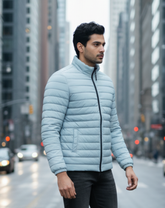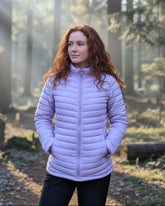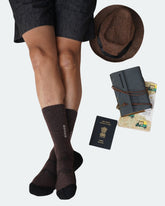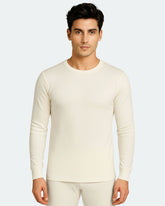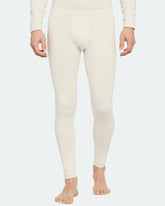Winter Thermals : The Inside Story By A Kosha
Being the layer closest to your skin, and seeing as how important choosing the right fabric is, here is an easy way to make the right choice when it comes to choosing your winter thermals. It is tight-fit inner clothing used during the extreme winter season in order to keep our bodies warm when we work away from home.
If you have faced extreme cold weather conditions, you probably understand the stress of wearing multiple layers. You wear so many layers that they impact your comfort level and the appeal of the whole outfit.
Well, winter thermals save from cold weather conditions and also from looking like a fashion disaster during winters. There are various benefits you can achieve with a high-quality pair of thermals. This article will let you understand them all!
What are winter thermals and why do you need them?
A thermal is a piece of apparel meant to provide insulation and keep our body warm. They soak up perspiration, keeping them from settling on our skin.
Now, any type of moisture formation on the skin during winters is deadly as it brings down the body temperature, leaving it prone to viruses. While the moisture is being soaked up, the insular nature of Thermal Wear for Women ensures that the heat is trapped in, keeping the body warm and toasty.

What makes it on an advanced level from other winter wear is the lightweight nature, without the unnecessary bulk that we all hate. Thermals fall under the underwear category and hence are sleek enough to be worn under our clothes, without making us look hefty.
Thermals are the innermost layer in the Winter Layering System, a method of wearing layers of clothing in a way that effectively protects you from bad weather.
On our travels, we have tested the Winter Layering System. Our verdict – the system is truly the secret to keeping warm.
To further drive home the point, we are going to explore each layer here.
First off, thermals are worn underneath your regular clothing and are also known as “long johns”. This garment is all about keeping you warm and dry, by wicking away moisture and trapping body heat next to your skin so that you retain heat longer.
Ski jumpers, mountaineers, and sports enthusiasts, all rely on this crucial layer to allow ease of movement even in severe temperatures.
Winter thermal work keeps the body at the right temperature while moisture (sweat) is removed. It keeps you warm in the winter, and cool in the summer. It maintains existing body heat well because a layer of air is kept between your skin and the thermal underlayer.
Thicker thermal underwear which fits loosely around the body is better at retaining air and, consequently, heat. Thinner thermal underwear which fits the body tightly is better at removing sweat. The right thermal underwear will keep you warm and completely breathable.
Another reason to wear thermals in winter is to conserve energy. Your body burns a lot of calories to keep you warm. In extreme temperatures it closes off blood flow to the extremities of your body to protect vital organs like your heart and lungs, so your arms and legs may not work as well when you need them to accomplish agile tasks.
Wearing thermals keeps these areas warm and allows you to go about your day in comfort and with ease – as you make your way up a beautiful snow-capped mountain!
Now let us divulge into the variety of types of thermals that you can lay your hands on. Yes, thermals are diverse and flexible in nature, and here is some basic information about them.
Wool thermals are the first to start with. Generally made up of merino wool, these are loved by all due to their ease and softness. These are the least itching and have less propensity to accumulate odour amongst thermals, making them fall on the costlier side.
You can have a look at our thermals which are made up of merino wool and bamboo, which are soft, skin-friendly, and temperature regulated. Here are base layers for men and women.
You can go through our website for more available products and details here. You can also order them online.
Cotton thermal underwear is the least effective one owing to the lack of insulation and warmth. This is more of use if you want to put on multiple layers, as they are light and easier to slip on, providing symmetry. Your loved ones can wear these when there is a slight nip in the air aka towards the end of late autumn.
The third option we have is thermals made of synthetic materials. These are hydrophobic materials such as polyester and others, which makes them economical as well as being easier to maintain. These can be opted for children, as they grow fast making the constant purchase of thermals a money-saving affair.
Blended thermals are the ideal choice as they provide utility and comfort without the burn in the pocket that usually is attached to merino wool thermals. Often wool and cotton blends are preferred as they provide the dual benefits of wool and cotton.
Features of a thermal clothing
The following features make your piece of thermal innerwear a winner:
Lightweight
Gone are the days where the warmth of a fabric depended on its thickness. Thermals that feel as light as a feather while keeping you wonderfully toasty exist! You do know what this means, don’t you?
Come winter, wearing thermal underwear will no longer force you to dress up in unflatteringly large silhouettes or threaten lumpy t-shirts. Smile for the camera with confidence!
Highest quality yarn
A good quality yarn will last longer, be of a fine texture, and is uncompromising in its warmth. Merino wool is soft, as is cotton wool or a cotton-polyester blend, making them the best thermal options.
Wicking Property
When you are out and about, the moisture released from your body gets absorbed by the clothes you wear. This is not a good thing, especially in a winter destination.
This is where you need your clothes to have a wicking property. This is a fabric’s ability to ‘wick’ or draw off moisture away from your skin thereby keeping you dry.
You will appreciate this most in humid climates, on treks, or any outdoor activity. Why? A fabric of poor wicking ability will have you shivering in the cold if your skin is left moist for a prolonged period of time.
Anti-bacterial Treatment
Natural fabrics offer advantages in breathability, temperature regulation, durability, and amazingly, antimicrobial properties. The antibacterial properties of a garment will ensure it lasts longer and remains more hygienic.
If you choose to go for synthetic fabric, ensure that it is antibacterial treated.
With all these great features, your thermals could also double as pajamas! Trust me you will need them when temperatures are as low as -10°C outside! Hence, it is important that only the most comfortable fabric is procured.
Outdoors – wool, quick-dry polyester
Indoors – cotton-polyester blends, cotton-wool blends.
Your choice will also depend on the kind of winter climate you will be in. Temperatures going lower than 5°C necessitate that you go for wool thermals. In humid destinations or during outdoor activities, quick-dry polyester is ideal due to its wicking properties. You will get a better understanding of this through a quick study of the fabrics.
Thermal fabrics to choose from
Wool
Fine wool or wool blends are the best insulators for sub-zero temperatures. The finer the wool, the softer it gets providing absolute comfort, warmth, and longevity. It preserves your body heat thereby acting as a thermal insulator. Its natural fibres are built such that it lets moisture wick away from your skin thereby keeping you warm and dry. Opt for wool thermals that have a yarn as fine as 18 microns or lower for a soft and comfortable experience, such that it does not irritate your skin.
Polyester
This fabric is ideal for outdoor, active sports in sub-zero temperatures. It is light in weight and is preferred as a next-to-the-skin layer due to its quick-dry properties.
Cotton
Cotton thermals are a good option for indoors, especially if you are in a temperature-controlled environment like in the office or college. They are usually blended with wool or polyester and make for a good option in temperatures above 5°C. Avoid wearing cotton thermals outdoors as they may catch moisture and leave you cold and damp, which encourages heat loss from your body’s core. Not a good thing! Still, wearing cotton or cotton flannel is great for sitting around a crackling fire in your living room drinking hot chocolate or sipping mulled wine as it is the softest option.
Styles for every outfit in the winter
Opt for a separate top and a lower body piece, covering from the waist to the ankles. The lengths of the sleeves vary. You may choose between full sleeves, half sleeves, sleeveless, and spaghetti straps to suit your needs. Even the sari gets special consideration, with the mid-waist length blouse thermal top.
Both thermal pieces are meant to be snug; not too loose so as to hang from your body and not too tight that it blocks your circulation. Snug enough to hug your skin.
The thermal outfits are meant to cover the different parts of the body. Here are some of the other accessories that will keep you warm in winters like scarves, Waterproof Gloves for Women, sweaters, mittens, ear cuffs, shawls, mufflers, jackets, long coats, socks, winter boots, and winter caps.

Here is how you can look stylish in winter places. We will guide you from the base layer to the outer layer and accessories.
Cool-weather is a fun time for layering on your favourite clothes, but do you need more than that when the weather gets really cold? Luckily, there are ways to stay warm while still looking great! Start with a warm base layer, add on insulation, then top with outerwear and accessories.
Let’s start with choosing the base layer:
- Wear long underwear if you have them. Thermal or silk long underwear does a great job of wicking moisture away from your body. These can be worn under almost any outfit to help you stay dry and warm.
- Wear an undershirt made from moisture-wicking fabric. Look for naturally moisture-resistant materials like merino wool, or athletic fabrics like polypropylene. (Tip: Avoid wearing cotton next to your skin.)
- Wear tights or leggings under your pants for added warmth. If you don't have long underwear, keep your legs warm by wearing a thin layer beneath your pants.
- Protect your feet with thick, long socks. (Tip: Your socks should be long enough to be pulled up over your base layer to ensure no cold air can touch your skin.)
Adding middle layer:
- Top your base layer with a shirt that can be easily removed. Being able to take off layers is extremely important in the winter. Wear a shirt that is easy to pull over your head or that has buttons or a zipper. (Tip: Add a sweatshirt over your shirt for a casual look.)
- Look for fabrics like fleece, wool, and flannel to help you stay warm. Sturdy, thick materials like these are ideal for a middle layer because they'll keep you warm but they're breathable, so you're less likely to get overheated.
- Wear heavy pants like jeans or corduroys. Opt for heavier fabrics like denim, corduroy, and wool to ensure you stay toasty during the coldest months.
- Wear a cardigan for a lightweight layer perfect for work or school. A cardigan will keep you warm at work, at school, or anywhere else indoors, and it's easy to take off if it gets a little warm.
- Wear a dress over your base layer for a warm, feminine look. Add a warm twist to your favourite dress by layering it over cold-weather pieces, or choose a sweater dress that's perfect for winter. (Tip for women: A sleeveless dress worn over a long-sleeved turtleneck looks cozy and chic. A pair of black leggings with a black or dark-colored dress gives you an instant style boost. Wear a sweater dress with leggings and ankle boots for a look that's fun and casual. Add a vest over your sweater dress for even more warmth.)
Select your outwears and accessories:
- Invest in a heavy coat in a neutral colour. A heavy parka in a colour like tan or black will keep you warm and will go with almost any outfit.
- Keep your head warm with a winter hat. You can select one from a variety of styles, including tuques (or beanies), stocking caps, fedoras, and heavy baseball caps. You can also choose from a wide range of materials, including cashmere, merino wool, and heavy knits. Cover your hands with gloves or mittens. Keep your fingers warm with leather, wool, or knit gloves.
- Wrap up in a scarf, shawl, or throw to accessorize your look. You can also add a shawl, poncho, or another wrap for an extra cozy layer. Experiment with different ways to tie your scarf to show off your style!
You will find all of the styles for thermals and long johns at Kosha. Other fabrics that also work well for thermal wear include synthetics like acrylics, nylon, spandex, and natural fabrics like silk and even bamboo!
Do share your comments about the kind of thermals you prefer and your suggestions on the winter layering system that you might have explored during your travels.
This blog article is updated by Kosha Team Member – Pallavi Kokane.
Editor’s Picks
Packable Puffer Jacket For Men
- From ₹3,900.00
₹8,400.00- From ₹3,900.00
- Unit price
- / per
Men's Full Sleeves Thermal | Merino Wool + Bamboo
- ₹4,940.00
₹7,600.00- ₹4,940.00
- Unit price
- / per
Alaskan Parka Jacket For Women - Slim Fit
- ₹8,925.00
₹11,900.00- ₹8,925.00
- Unit price
- / per
Lightweight Packable Puffer Jacket For Women
- ₹6,300.00
₹8,400.00- ₹6,300.00
- Unit price
- / per
Men's Merino Wool Cushioned Technical Socks
- ₹1,074.00
₹1,790.00- ₹1,074.00
- Unit price
- / per
